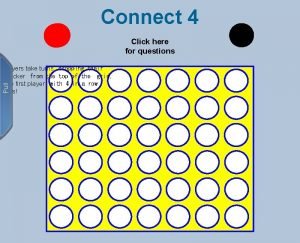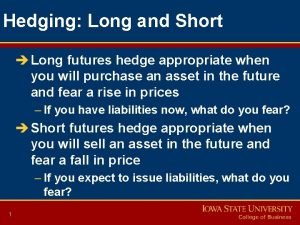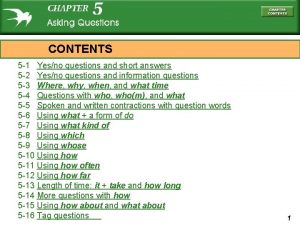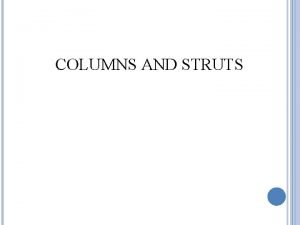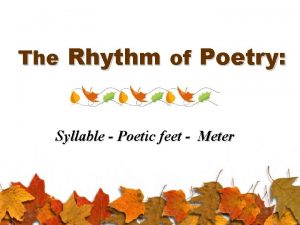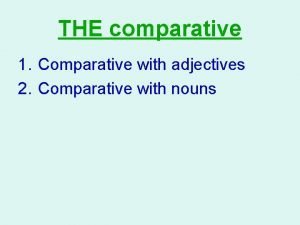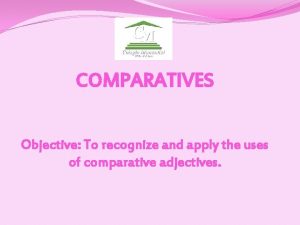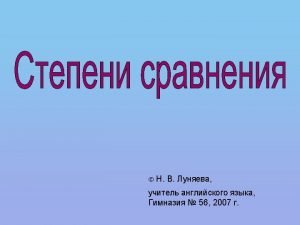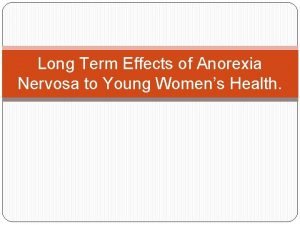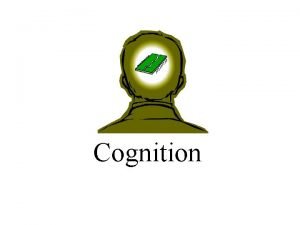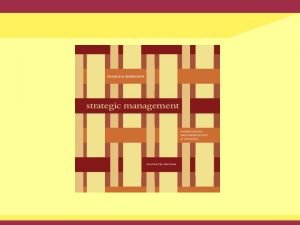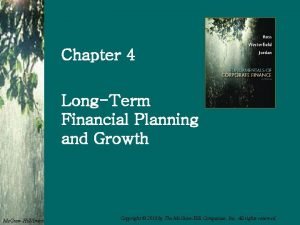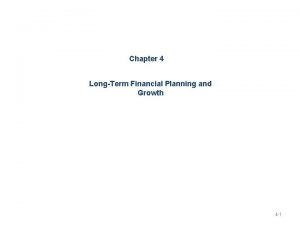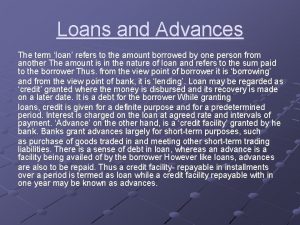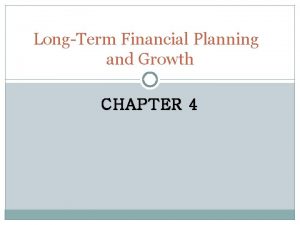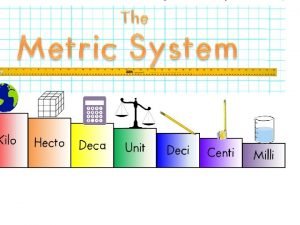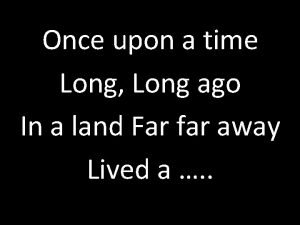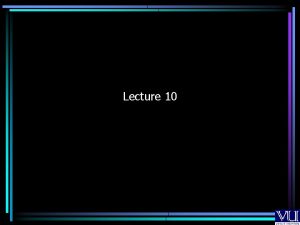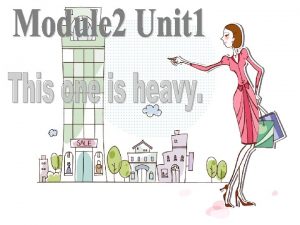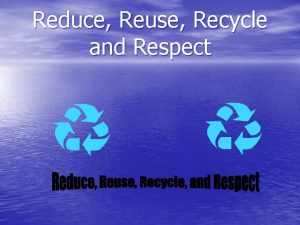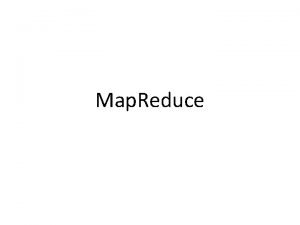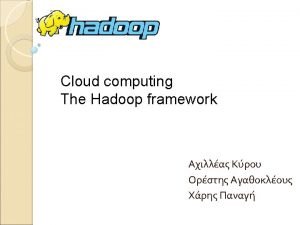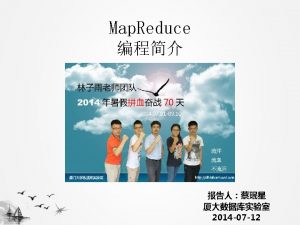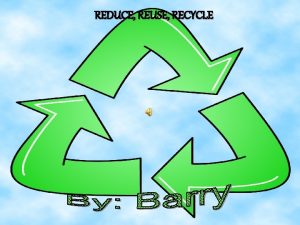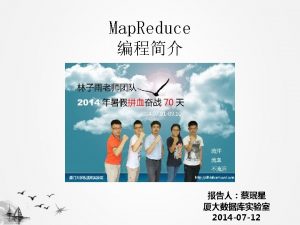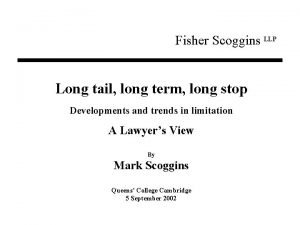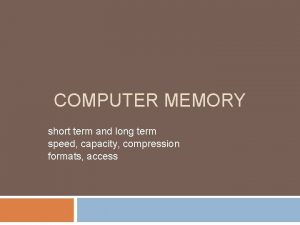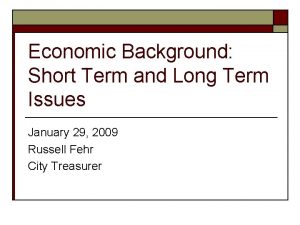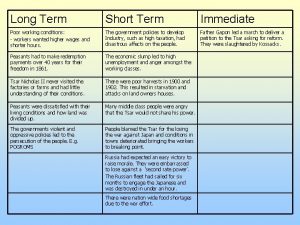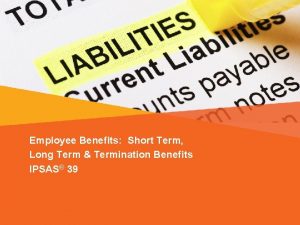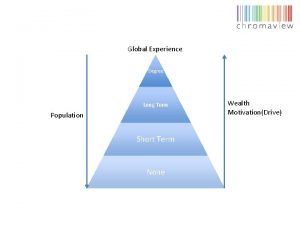Short term and long term approaches to reduce














































- Slides: 46

Short term and long term approaches to reduce greenhouse gas emissions from “Land use, Land Use Change, Conversion of Biomass & Transport “ systems Arthur Riedacker INRA and Joseph Racapé MIES a. riedacker@wanadoo. fr

MAIN ASPECTS DISCUSSED 1/ Short term approaches (Kyoto Protocol or small GHG emission reductions) 2/Insufficiencies of present approaches for the long term

Climate change a global issue • In the long term will concern every country • In the short term the Convention on climate change and the Kyoto Protocol is a good start

Share of agriculture and forestry in national inventories • Low Fossil Fuel Consumption Up to 5% • But high direct GHG Emissions (e. g. under UNFCCC) Up to 23% or more

French options to reduce GHG emissions under the Kyoto Protocol www. effet-de-serre. gouv. fr

And

Emissions from agriculture in France ! 1990 2002 Agriculture

Emissions inventory for France Emissions included in Agriculture and forestry • • Cropland Livestock Agriculture Forestry and others 8. 1% 7% 1. 4% 9. 8% Some emissions in other sectors related with agriculture and forestry • • • Pulp and paper industry Chemical (fertilizer)/other industries Metallurgy and steal industry Road transportation Housing Waste 1. 5% 5. 2% 3. 1% 5. 8% 19% 2. 1%

Main options to reduce emissions in agriculture and forestry

But these otions are insufficient Insufficient to meet he Ultimate Objective of the Convention

Stabilization of GHG concentrations in the atmosphere at a non dangerous level – To allow adaptation of ecosystems – To not threaten Food Production – To allow sustainable economic development

Emissions curves to stabilize concentrations at various concentrations 450, 650 or 850 ppmv Natural Uptake

Divide Global Emissions by 2 For equity => Divide by 4 in Industrial Countries => Maintain around the present level in Developing countries

Some studies • LESS (Low Emitting Supply Scenario) IPCC 1996 Second Assessment Report in Chapter 19 and Summary for decision maker • Last year for France – Division by 4 at 2050

Most studies of that type are mainly for the energy sector • Efficiency, E. Conservation, New technologies • Biofuel use do not consider Agriculture and Forestry • Land Use and carbon stock changes • Emission reductions • N 20 (mainly from nitrogen fertilizer …) • CH 4 (from enteric fermentation, animal waste… ) • Land use planning

UNFCC GHG Inventories are • to assess emissions by country • to verify commitments but not for Policies and Measures That we will probably need in the long term…

They do not reflect net or avoided emissions

Carbon stock changes in Ecosystems Reflected in Not reflected in Agriculture and Forestry Changes in field or forest biomass Under UNFCCC Changes in soil carbon stocks ? Under UNFCCC Changes in carbon stocks of spontaneous aforestation Under KP Changes in soil carbon below 30 cm ? Under KP Carbon stocks changes in wood in buildings Under KP Incomplete carbon stock changes Under KP article 3. 4

N 2 O, CH 4 Reflected in Not reflected in Agriculture and Forestry In the field Manufacturing & transport N 20 form fertilizer CH 4 from rice CO 2 emissions from fossil fuel consumption and transportation N 20 from conversion of ammonium to nitrate

Harvest and Conversion Biomass for Food Reflected in Not reflected in Agriculture and Forestry CH 4 emissions from livestock • Enteric fermentation • Animal manure Emissions from food and forest industries CO 2 , CH 4 CFC etc. Avoided emissions with bioenergy Avoided emissions through different diets

Harvest and conversion of non food biomass Reflected in Not reflected in Agriculture and Forestry Changes in field or forest biomass Under UNFCCC Changes in soil carbon stocks ? Under UNFCCC Changes in carbon stocks of spontaneous aforestation Under KP Changes in soil carbon below 30 cm ? Under KP Incomplete carbon stock changes Under KP article 3. 4

End of life cycle Reflected in Not reflected in Agriculture and Forestry Changes in carbon stocks from forest fires Incineration outside of agricultural or forest land CH 4 from waste and landfills Avoided emissions from use of biofuels, including biogas Avoided CH 4 and CO 2 emissions due to use of sludge on farmland or forests etc…

Life Cycle Analysis can help to determine avoided emissions (reference scenario) But are not, as stated in ISO 14040, not the only approach to be considered

Life Cycle Analysis can help if the objectives of LCAs are clearly defined, as recommended by ISO 14040 But are not, as stated in ISO 14040, the only approach to be considered

e. g. effect of nitrogen and biofuel Svebio

LCAs e. g. IEA standard methodology for biofuels But usually do not consider land use change other uses of land

But land is major limiting factor in the world ( Goklany 1992)

Population is increasing

Future energy consumption in OECD Europe may not increase (RIVM)

But may increase in Africa (RIVM)

Land cover may change drastically if agricultural productivity on a land basis is not increased in particular in Africa Cf. RIVM studies Image 2


=>a need for a systemic and integrated approach over 50 or 100 years INRA

The “LU. LUC. CB & T” approach for Land Use, Land Use Change, Conversion of Biomass, and Transport approach

A systemic approach taking into account direct and net emissions, indirect emissions, avoided emissions INRA

Combining - The territorial approach ÞThe Land Use, Land Use change and forestry approach - Life cycle analysis related to all land products

and for Sustainable Development A 4 PRONGED APPROACH Top Down Land /Food / Non food Bottom Up From eco-socio-systems From End User Needs Food Housing Transportation etc. Macro-economic modeling

1/ Emissions from all land (LU and LUC) INRA

And changes with time • E. g. in Europe • In 1860 1 ha for 1 t of grain, • In 1990 – Gain: 1/6 ha for 1 t of grain 5/6 ha to do something else ( other crop, forestry , biofuel production …) – Loss: more N 20 emissions More nitrate in water Final result : A huge net gain

Changes vary according to countries in the world, and the technology • Industrialized countries, China, India; – Still more efficient use of fertilizer • More intensive agriculture in Sub-Saharan Africa (often at the pre-industrial stage, depleting soils and leading to soil erosion)

And 2/ HUMAN USE OF BIOMASS 2. 1 Food - direct vegetables - via livestock 2. 2 Bioproducts 2. 3. Recycling 2. 4 Bioenergy 3/And END OF LIFE - Landfill - Incinération - Compost

within a country 1/RURAL AREA *Cropland *Grassland *Forest and others 2/HUMAN USE OF BIOMASS 2. 1 Food - direct vegetables -via livestock 2. 2 Bioproducts 2. 3. Recycling 2. 4 Bioenergy 3/END OF LIFE Landfill Incinération Compost INRA/ MIES 4 TRANSPORT INPUT

With international exchanges 1/RURAL AREA *Cropland *Grassland *Forest and others 2/HUMAN USE OF BIOMASS 2. 1 Food - direct vegetables -via livestock 2. 2 Bioproducts 2. 3. Recycling 2. 4 Bioenergy 3/END OF LIFE Landfill Incinération Compost INRA/ MIES 4 TRANSPORT INPUT

For sustainable development A top down approach – Food / Feed / Non food and Feed A bottom up approach considering local constraints, employment, local biodiversity, etc. . - Mountains - Semi arid land - Competing use of biomass etc. . End users approach ; (survival and other emissions) -Calories proteins lipids Housing transportation etc. . Macro-modelling

On this basis we are forming a group to study options for 2050 • For France ; at farm level, regional level, national level • For Brazil, Sub-Saharan Africa and India And we would like to include other industrial countries such as the US

Thank you and if interested please contact us
 Tall+short h
Tall+short h Short medium and long term planning in education
Short medium and long term planning in education Example of short term human resources
Example of short term human resources Difference between long term and short term liabilities
Difference between long term and short term liabilities Difference between long term and short term liabilities
Difference between long term and short term liabilities Good short term goals
Good short term goals Short term finance planning
Short term finance planning Long term memory vs short term memory
Long term memory vs short term memory Once upon a time lived
Once upon a time lived Pull questions
Pull questions Props in tinikling
Props in tinikling Greek
Greek Long run supply curve
Long run supply curve Short division vs long division
Short division vs long division Long waves and short waves
Long waves and short waves Short case vs long case
Short case vs long case Hedge ratio
Hedge ratio Long division how to
Long division how to Short and long answers
Short and long answers Column slenderness ratio
Column slenderness ratio Difference between short run and long run economics
Difference between short run and long run economics Iamb poetry
Iamb poetry Short adjectives and long adjectives
Short adjectives and long adjectives Long and short vowels rules
Long and short vowels rules Long adjectives
Long adjectives Short adjectives
Short adjectives Tasty syllables
Tasty syllables Pictures of vowels
Pictures of vowels I am in contracted form
I am in contracted form Music composition rubric
Music composition rubric Short writing tasks
Short writing tasks Insulin short intermediate and long acting
Insulin short intermediate and long acting Empty
Empty Long term storage and retrieval
Long term storage and retrieval Anorexia nervosa long term effects
Anorexia nervosa long term effects Long term storage and retrieval
Long term storage and retrieval Long term objectives and strategies
Long term objectives and strategies Long-term debt preferred stock and common stock
Long-term debt preferred stock and common stock Long term financial planning and growth chapter 4
Long term financial planning and growth chapter 4 Long term financial planning model
Long term financial planning model What is long term loans and advances
What is long term loans and advances Long term financial planning and growth
Long term financial planning and growth Not so long ago people
Not so long ago people Once upon time there was a prince
Once upon time there was a prince Once upon a time a long long time ago
Once upon a time a long long time ago Long long int c
Long long int c để nguyên nước chấm cổ truyền
để nguyên nước chấm cổ truyền









